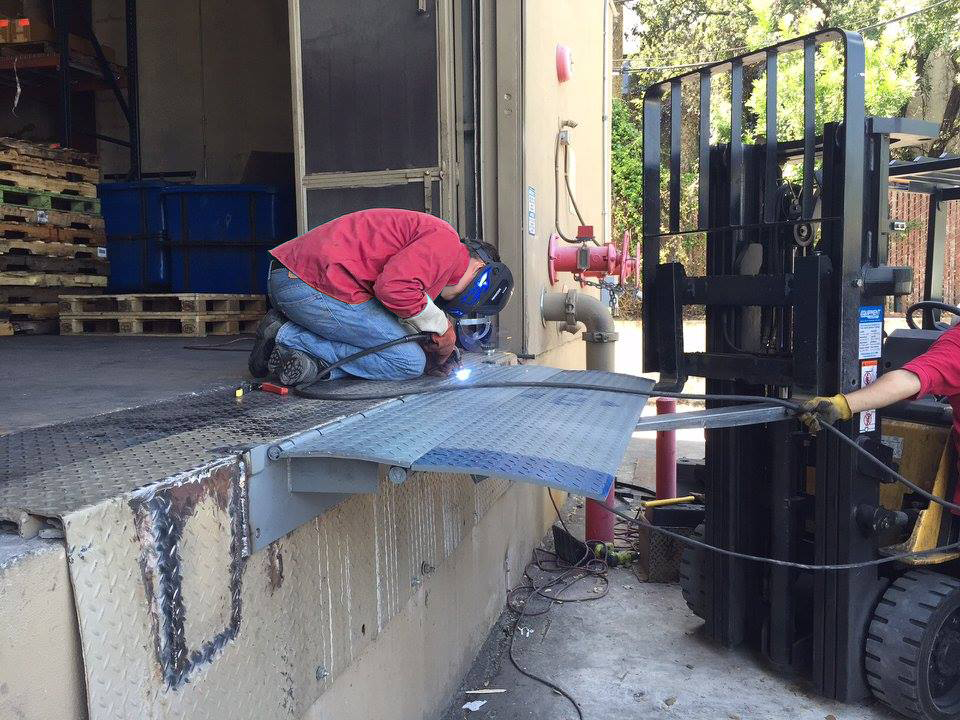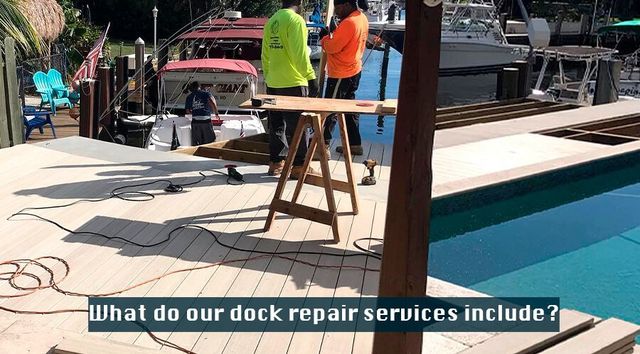Seasonal Preparations: When to Arrange Your Dock Repairs
Seasonal Preparations: When to Arrange Your Dock Repairs
Blog Article
Effective Dock Fixing Techniques: Guaranteeing Architectural Stability
Ensuring the architectural stability of docks with efficient repair work methods is critical for the longevity and safety of aquatic centers. This includes a multi-faceted method starting with comprehensive examinations making use of sophisticated technologies like sonar tools and from another location operated vehicles (ROVs) to detect both noticeable and hid damages. Ultimately, picking the best repair products, such as composite materials and corrosion-resistant alloys, is vital for longevity. Architectural reinforcement approaches, including the implementation of cross-bracing systems and load-distribution plates, play a crucial role in mitigating stress factors. The relevance of these techniques ends up being evident when discovering advanced fixing methods and preventative upkeep strategies.
Analyzing Dock Damage
Examining dock damages is an important first action in ensuring the structural stability and safety and security of any docking center. This first examination involves an extensive examination to identify both hidden and noticeable damages. Secret facets to take a look at include the dock's foundation, pilings, decking, and hardware. Each component should be inspected for signs of wear, rot, corrosion, or other forms of degradation that could compromise the structural integrity.
Architectural designers or qualified examiners typically do these evaluations making use of specialized devices and strategies. For example, underwater examinations could utilize sonar equipment or from another location ran cars (ROVs) to discover submerged damages. Over water, visual inspections are complemented by utilizing dampness meters and other diagnostic devices to uncover underlying issues not immediately noticeable to the nude eye.

Choosing Repair Work Materials
Choosing the proper fixing products is a crucial action in the dock remediation process, one that directly influences the longevity and performance of the repaired structure. Material selection need to be driven by aspects such as ecological problems, load-bearing needs, and compatibility with existing dock parts. Wood is a conventional option for docks due to its natural strength and visual allure. Nevertheless, choosing the best kind of wood, such as pressure-treated lumber or naturally rot-resistant species like cedar or teak wood, is essential to withstand marine settings.
Along with wood, composite products are increasingly preferred because of their resilience and reduced maintenance needs. Composites, commonly made from a mix of plastic and wood fibers, supply outstanding resistance to rot, pests, and UV damage. For steel docks, selecting corrosion-resistant alloys such as galvanized steel or marine-grade aluminum is necessary to prevent corrosion and ensure architectural honesty in saline water conditions.
Epoxy resins and marine-grade sealers are indispensable for repairing fractures and securing joints, providing a waterproof barrier and boosting the dock's total strength. By carefully choosing high-grade materials, dock repair work can accomplish resilient outcomes, therefore safeguarding against future deterioration and making sure risk-free, trusted usage.
Architectural Support Techniques
Efficient structural reinforcement techniques are crucial in ensuring the security and long life of dock repair services. This technique is especially efficient for docks subjected to heavy loads or rough ecological problems.
One more vital method is the application of fiber-reinforced polymers (FRP) These materials supply high strength-to-weight proportions and exceptional resistance to corrosion, making them ideal for enhancing wood or concrete docks. FRP can be used in sheets or strips and bound with epoxy resins to boost structural integrity.
Supporting and anchoring systems additionally play a critical function in structural support. Cross-bracing, utilizing steel or wooden light see this here beams, can combat lateral pressures, reducing guiding and movement. Securing systems, such as helical piers or driven heaps, offer a secure foundation by moving loads to much deeper, much more secure soil layers.
Last but not least, the integration of load-distribution plates can assist distribute weight a lot more equally across the dock's surface area, alleviating local stress factors. These strategies collectively make certain that docks remain durable and safe, efficient in withstanding the roughness of their functional environment.
Advanced Fixing Methods

Another advanced strategy entails undersea welding, which enables fixings to be performed without the demand to dewater the location. This technique is especially beneficial for dealing with structural issues in immersed dock parts, making sure very little interruption to operations. Boosted welding strategies, combined with robotic systems, deliver accuracy and integrity, consequently prolonging the lifespan of the dock.
In addition, cathodic defense systems are carried out to avoid corrosion in metal dock frameworks. By utilizing sacrificial anodes or amazed existing systems, these strategies efficiently mitigate the electrochemical processes that lead to product wear and tear.
Lastly, progressed monitoring modern technologies, such as architectural health surveillance (SHM) systems, offer real-time data on the problem of dock structures. These systems make it possible for proactive upkeep and timely treatments, eventually making certain the long-lasting structural stability of the dock.
Maintenance and Prevention
Upkeep and prevention are basic concepts that underpin the long life and security of dock frameworks. Regular examinations are critical, enabling early discovery of wear and tear, review prospective weaknesses, and environmental influences. A proactive strategy, including regular checks for rust, rot, and architectural shifts, minimizes costly repair services and prolongs the dock's operational life.
Preventative measures must consist of applying protective coatings to steel parts to protect against corrosion and making use of treated wood to stand up to decay. Furthermore, making certain proper drain and air flow can prevent water accumulation, which is a typical source of architectural degradation. Integrating high quality products and sticking to manufacturer guidelines during building and repair service stages additionally play crucial duties in improving toughness.

Training personnel in dock maintenance best methods makes certain regular application of safety nets. Leveraging technological advancements, such as see here now drones for inspections and sensing units for real-time tracking, can even more enhance upkeep efforts. By focusing on upkeep and prevention, dock proprietors can make sure structural integrity, functional security, and affordable management over the dock's life expectancy.
Final Thought
To conclude, preserving the structural honesty of marine centers necessitates thorough dock repair work strategies. Complete evaluations making use of advanced devices uncover both visible and hid damages, while the option of appropriate repair service materials improves durability. Carrying out structural reinforcement approaches addresses tension factors effectively. Advanced repair work strategies, combined with routine upkeep practices, make sure the dock continues to be safe and functional under varied ecological conditions. Embracing these approaches considerably extends the life-span and functionality of marine facilities.
Guaranteeing the structural stability of docks with efficient fixing strategies is extremely important for the longevity and safety of aquatic facilities.Selecting the appropriate repair materials is a critical step in the dock restoration process, one that straight affects the long life and efficiency of the fixed framework.Efficient structural reinforcement techniques are critical in ensuring the security and long life of dock repair services. By focusing on maintenance and prevention, dock owners can make certain architectural stability, operational safety, and cost-effective management over the dock's life-span.
In verdict, preserving the structural integrity of aquatic centers requires comprehensive dock fixing strategies.
Report this page